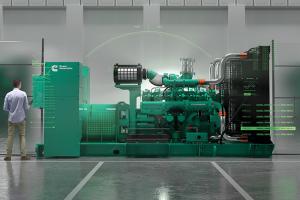Connecting functions through CMMS
Computerized maintenance management systems (CMMS) have evolved to embrace mobility, automation and connectivity within buildings with the use of smartphones and tablets. This is good news for facilities managers in their quest to improve efficiency. However, hospitals pose a challenge to manufacturers because of their highly regulated nature.
You may also like |
| The next step in BIM adoption |
| CMMS helps hospital with Joint Commission documentation |
| Resources to keep mechanical and electrical systems running |
| |
“Hospitals are more regulated than most organizations, forcing them to be more focused on compliance and reporting,” says Craig Shepard, director of sales, MicroMain Corp., Austin, Texas. “They must comply with audits by regulators and be able to provide records such as asset risk assessments, statements of conditions, plans for improvement and asset history documentation to demonstrate that preventive maintenance schedules have been maintained and corrective maintenance completed.”
Hospital expansion has given facilities managers a unique challenge in the implementation of CMMS as well, says Harry Kohal, vice president of business development, Eagle Technology Inc., Mequon, Wis. “Many large hospitals have added to their original buildings over time,” Kohal says. “While the inside of the facilities and systems have been upgraded, the exterior of the original buildings may be buried somewhere in the mix of the additions. The varying ages of these walls can pose a problem in trying to add the next expansion.”
Advanced flexibility
The "Internet of Things" is having a big impact on connecting assets to predictive maintenance in CMMS and driving more accurate, cost-effective results, experts agree. Mobility is one key area, with stronger and more flexible apps available for maintenance on-the-go. “Automation is a major focus as CMMS providers continually seek to increase efficiencies and enhance communication through automatic report generation and email notifications,” says Paul Lachance, president and chief technology officer, Smartware Group, Center Harbor, N.H.
As CMMS solutions evolve, so does the CMMS footprint within a hospital. In addition to the capabilities required for building management, CMMS solutions provide functionality that spans facilities operations to other units like clinical engineering, environmental services, capital planning and information technology. “Although these groups require different skill sets, education and regulatory knowledge, they do not require multiple software solutions,” says Mike Koenig, vice president of sales and marketing, TMA Systems, Tulsa, Okla.
The latest advances in CMMS often parallel two factors: software and computer hardware technology. Today’s CMMS must be mobile, with applications that serve the users, who typically are technicians in the field. “The applications must evolve with health care industry requirements such as the recent alternative equipment maintenance opportunities, which allow hospital department managers to maintain equipment differently from equipment manufacturers’ recommendations, provided certain decisions and processes are followed,” says Ben Mannisto, CEO, Phoenix Data Systems Inc., Southfield, Mich.
Smartphone and tablet capabilities are essential to leveraging CMMS, allowing technicians to use multiple applications to expedite workflow. “By using smartphones, technicians can complete scheduled maintenance in real time, respond to unplanned requests, and use the technology to inventory, scan and bar code assets,” says Brian Bell, vice president of strategy, Dude Solutions, Cary, N.C.
In fact, a mobile strategy is no longer “nice to have,” but a critical part of maintenance operations, experts agree. Today’s core CMMS have smartphone and tablet capabilities, which give facilities managers not only access to assets, equipment, related work orders and parts, but the ability to incorporate cameras, scanners and other key mobile features into the mix.
“Smartphone and tablet-based capabilities are important in the CMMS world because the ability to access information on-the-go is paramount, especially in the health care arena,” Shepard notes. “This functionality allows maintenance technicians to access, create and complete work orders, and perform preventive maintenance in the field. They are able to access equipment histories, inventory and warranty information — all on their browser-based devices, which saves time and money.”
Moreover, CMMS are becoming more compatible with building information modeling (BIM) software, allowing organizations to manage their facilities smarter. For a hospital, this can reduce the risk of a crisis due to an issue such as a water valve leak, according to Bryan Wallace, senior director of Accruent, Austin, Texas. “Instead of spending time tracking down the location, the facilities manager can get to the heart of the issue faster and minimize risk within the building,” he explains. “Our software is compatible with BIM software; it’s a feature that many of our customers use.”
TMA Systems also has released a BIM interface to integrate its CMMS solution with Autodesk Revit. The interface helps hospitals to eliminate information loss and leverage the data in BIM models to improve communication and collaboration among architects, engineers, contractors and facilities managers.
Eagle Technology Inc. has been involved in furthering development of the Construction-Operations Building Information Exchange (COBie) for importing BIM data. The COBie process is a Lean methodology, which can save time and money in the construction process. “Our CMMS, Proteus MMX, was certified by the team at the COBie Challenge to meet the criteria for receiving data and storing it in proper elements from COBie BIM data,” Kohal explains.
“The COBie process allows the data on equipment to be designed by the architect and updated by the contractor when the actual equipment arrives at the construction site,” Kohal continues. “The facilities team is given accurate, usable data right in the CMMS, avoiding the need for time-consuming data gathering and entry when the building or remodel is turned over to them.”
Additionally, CMMS are becoming compatible with other types of software to improve hospital facilities management, according to vendors that supply the nation’s hospitals. Typical applications include purchasing, personnel, accounting and real-time locating systems. Some CMMS have an effective application programming interface, which allows third-party applications to consume data from the CMMS and vice versa. In addition, modern CMMS solutions can interface with other systems through Web-based services.
Smart equipment and sensors in buildings are increasingly able to provide diagnostic information through connectivity to CMMS, leading to better problem analysis and decision-making around resource allocation, according to Bell. Another example of software interaction comes into play when one considers the interoperability of CMMS systems with other operations software platforms such as inventory or supply chain. “Best-in-class CMMS improve the process of finding and sourcing parts, either from internal storerooms or through supply vendors,” he says.
Other innovations
Among other CMMS innovations, Smart Facility Software, Reno, Nev., has enhanced its CMMS by adding smartphone and tablet access, giving users the ability to take pictures and have employees sign off on inspections and surveys. Users also can assign specific days per week for tasks in work assignments. Other additions include more than 60 dashboards for its Survey Optimizer and ES Optimizer, and the ability to perform two-part, black light inspections in its Survey Optimizer.
“Our goal is to bring vital information to environmental services managers wherever they roam and give them different desktop and mobile options to do their jobs more efficiently,” says Shawn Wright, principal.
MaintiMizer from Ashcom Technologies Inc., Ann Arbor, Mich., is available in several editions. It is customizable and has reporting capabilities. “In addition to a Web-based edition, MaintiMizer is available as a software-as-a-service [SaaS] edition, MaintiMizer.com, and MaintiMizer BlackBox, a plug-and-play network appliance that eliminates the need for an internal IT department,” says Garrett Haskins, senior application support analyst.
EQ2, Burlington, Vt., offers hospital equipment maintenance software (HEMS), which is modularly structured to fit any size hospital. The software provides an optimally scheduled predictive maintenance program for fire and life safety equipment, electrical, mechanical, HVAC, refrigeration and grounds equipment.
“HEMS features a smoke/fire compartment inspection program that allows for orderly evacuation in an emergency. A utility management program ensures that critical equipment, such as that used for infection control and life support, meets regulations within the preventive maintenance program. With these modules, the facilities manager can track his or her preventive and corrective maintenance, deferred maintenance and project work,” says Tim Pierson, EQ2 director of facilities implementation services.
MicroMain has unveiled a maintenance management program featuring an advanced reporting platform that allows users to create dashboards and reports with analytics. The software is available as either an on-premise or SaaS (Web-based) solution. “The functionality meets the needs of both facilities and clinical engineering/biomedical departments, and includes work request and mobile functionality (for smartphone and pocket PC technology), inventory management, purchasing and project management,” Shepard says.
Smartware Group Inc. has released Bigfoot CMMS Enterprise and Enterprise+ 1.6, which offer automated options and configurations to improve maintenance communications. Users can set up automatic emailing of Bigfoot reports to expedite the review of critical information by personnel. Automatic email notifications also can be configured for work orders that have not been modified within a designated time period.
In addition, Release 1.6 provides increased visibility into user record modifications — from dashboard views of previously altered records to audit log access to all record modifications, including deletions.
Future updates
Transforming data into insight will continue to be a big driver for CMMS solutions in the hospital environment, predicts Wallace.
“A strong reporting capability, complemented by business intelligence, will help health facilities managers to focus on predictive maintenance, allowing them to eliminate the need for reactive maintenance,” he says.
Mannisto predicts that the CMMS of tomorrow will be smarter and more complete, allowing maintenance systems to manage normal processes autonomously.
If his prediction comes true, health facilities managers soon may operate in a world where routine tasks play themselves out according to preset standards, and personnel are notified if an issue arises.
Neal Lorenzi is a freelance writer based in Mundelein, Ill.
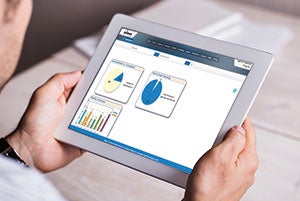 | Central intelligenceThe Proteus MMX dashboard shows key performance indicators and graphs. |
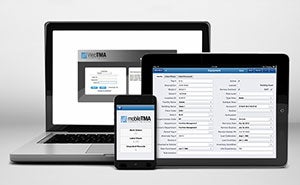 | Fully loadedWebTMA Enterprise uses integrated software modules that include work orders, preventive maintenance, inventory management and other features. |
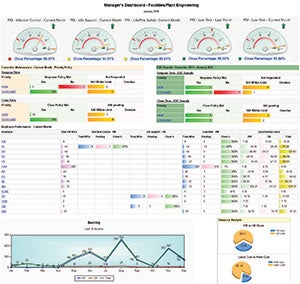 | Easy readThis dashboard provides relevant, actionable information into specialized formats, orders and summaries that are specific to what each technician, manager, director, vice president or member of the C-suite most wants to see. |
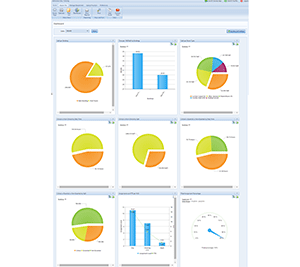 | At your fingertipThis is one of 60 instant dashboard reports available from this ES management and survey management software. |
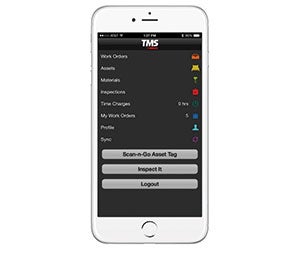 | Instant connectionTMS Sidekick allows technicians to stay connected in the field, enabling them to input data and receive real-time updates. |
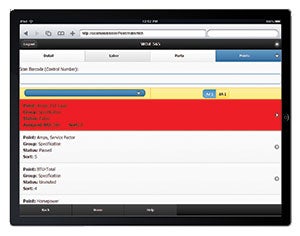 | Get mobilizedCMMS allow users to complete work orders, PMs and inspection remotely on any browser-based device. |
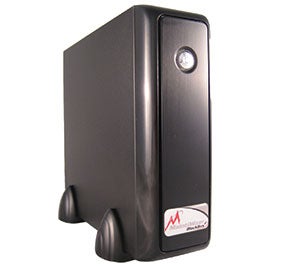 | Work-readyMaintiMizer BlackBox is a plug-and-play computerized maintenance |
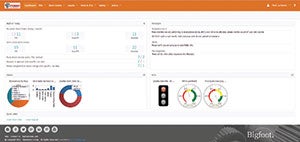 | All inclusiveUsers can access configurable charts, key performance indicator monitoring, outstanding PMs, and facility and corporate messages on this modern and easy-to-use interface. |
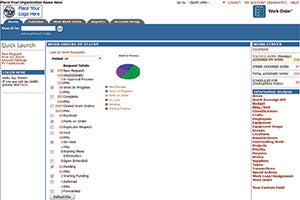 | Simple solveMaintenanceEdge features centralized requests, automated maintenance workflow and simple reporting capabilities. |


